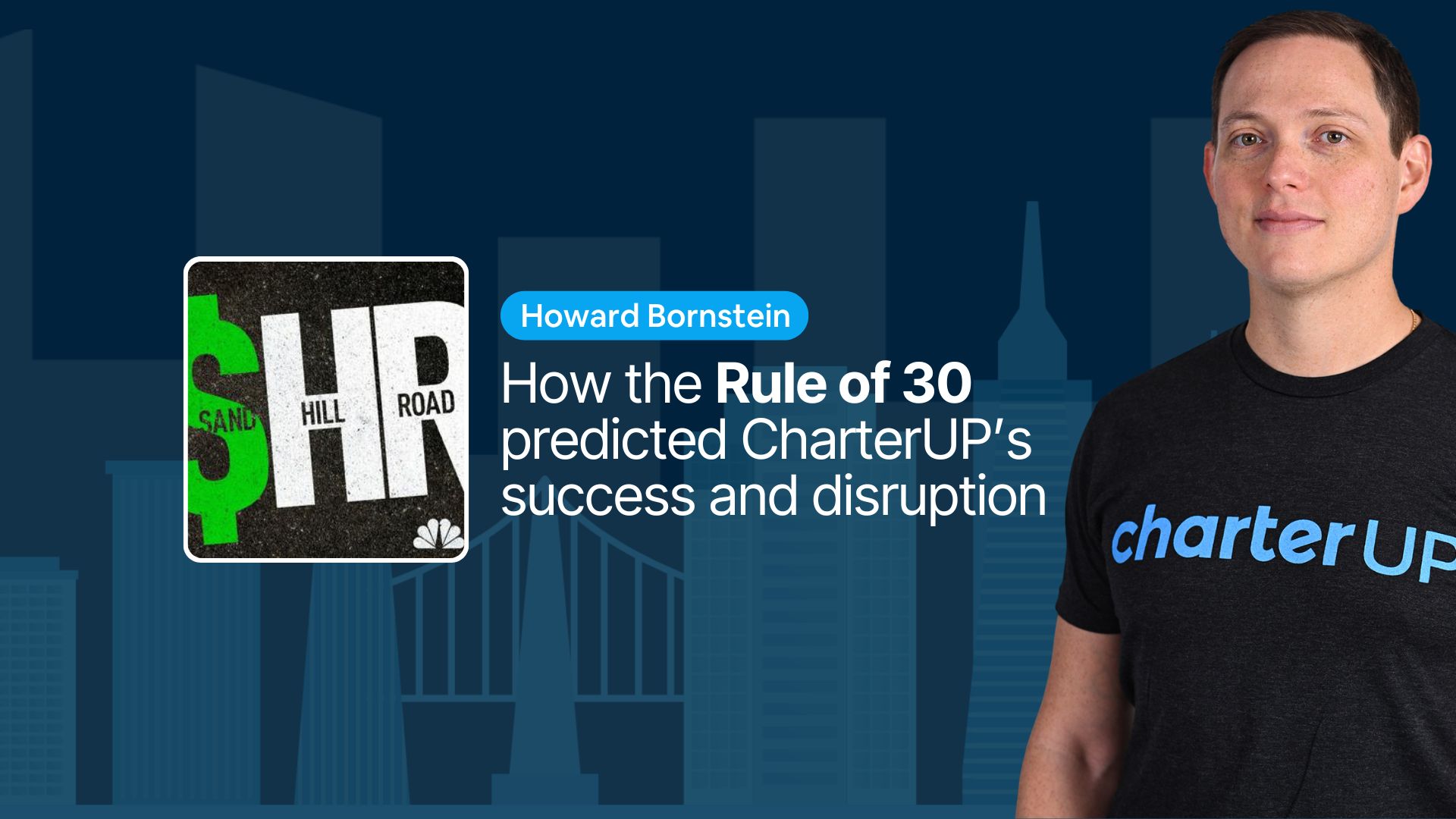If an industry hasn’t innovated in 30 years, it’s ripe for a revolution.
That’s the essence of Howard Bornstein’s “Rule of 30,” a simple yet powerful investment philosophy that seeks out sectors desperately needing a technological shake-up.
On a recent episode of NBC Bay Area’s Sand Hill Road podcast, broadcast from the tech-savvy San Francisco Bay Area, Howard showcased how he applied his “Rule of 30” to transform the antiquated charter bus industry with CharterUP. This venture capital and tech-focused podcast provided the perfect backdrop for Howard to detail his strategy for revolutionizing a market, updating a service and completely redefining its landscape.
The Power of the “Rule of 30”
What It Is
The “Rule of 30” is a compelling philosophy coined by Howard Bornstein, suggesting that if an industry hasn’t undergone significant innovation in over 30 years, it is ripe for disruption. This guideline serves as a rubric for entrepreneurs and investors looking to inject new life into stagnant sectors.
“The Rule of 30 says that if there’s an industry or business process that hasn’t seen significant innovation in at least 30 years, then there’s a good chance that there’s a big opportunity to disrupt it.”
Why It Matters
This rule is crucial because it identifies potential opportunities where technology can dramatically improve efficiency, customer experience and service delivery. As industries evolve at varying rates, those that lag behind present unique chances for transformative change, fostering growth and competition.
CharterUP: A Case Study In Disruption
Before CharterUP’s intervention, booking a charter bus was notoriously cumbersome. The process was fraught with challenges: calling multiple operators, awaiting delayed quotes and hoping for timely service. It was an industry stuck in a decades-old operational model, making it an ideal candidate for Howard’s “Rule of 30.”
CharterUP founder and CEO Armir Harris envisioned a revolutionary approach to charter bus travel, crafting the initial concept to transform the industry. Howard applied his “Rule of 30” rubric to CharterUP as an investor, and recognized so much potential in the vision that he joined the company as president.
CharterUP’s seamless, fully-integrated marketplace connects customers with over 600 bus operators nationwide, streamlining the booking process. This intuitive platform not only enables instant bookings but also facilitates straightforward comparisons of service offerings and grants access to transparent customer reviews and detailed operator records.
“CharterUP is disrupting an industry as archaic as phone books with a new model of transparency, accountability and accessibility,” Howard said during the podcast. This transformation mirrors the evolution seen in other sectors, such as eyewear with Warby Parker and personal transport with Uber, illustrating the universal applicability of the “Rule of 30.”
In the bustling world of tech-enabled services, several platforms have become household names by simplifying the booking of hotels, flights and personal rides. But when it comes to large group transit, the landscape remains largely untouched by modern technology.
“There’s no one else doing what we’re doing,” he said.
Unlike Kayak, which handles bookings for hotels and flights, or rideshare platforms that have transformed individual transportation, CharterUP is pioneering in a space that these giants haven’t cracked — large group transportation.
CharterUP is not just filling an existing void but is setting new standards for how large groups travel. With CharterUP, customers can swiftly navigate through a comprehensive platform, comparing prices, checking the reliability of bus operators and booking large buses with the same ease as booking a hotel room or hailing a taxi.
Tune into the full episode of the Sand Hill Road podcast to hear Howard describe the principles that have shaped his successful investment strategies and how they are influencing today’s technology landscape.



